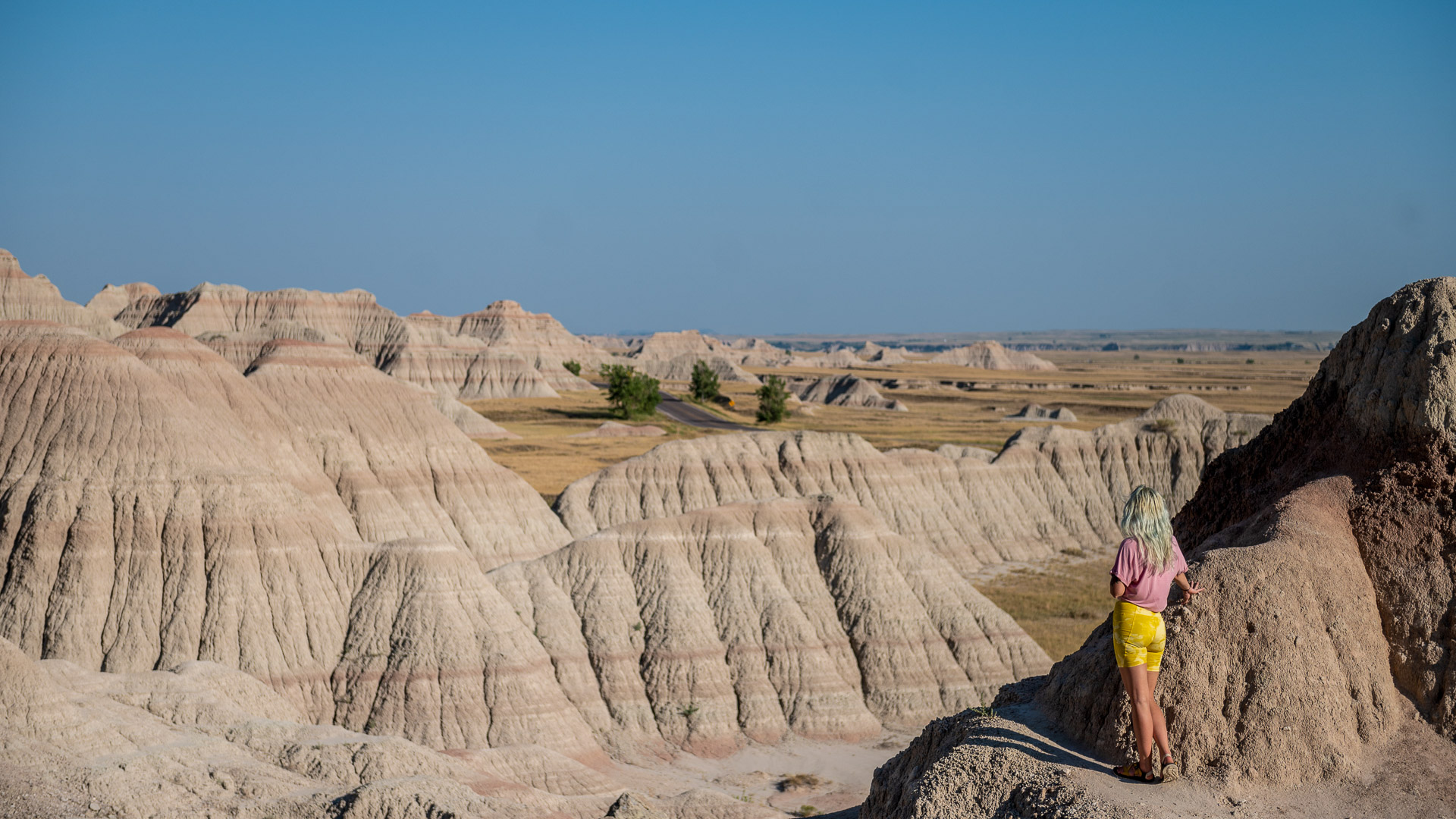
These off-the-radar national parks will help you ditch the crowds while visiting some of America’s most breathtaking natural wonders.
It began almost as soon as the COVID-19 pandemic hit in earnest. Across the United States, Americans began looking to the outdoors as an escape from an ever-changing reality. Suddenly, outdoor retailers from coast to coast were scrambling to keep pace with the number of tents, sleeping bags, bicycles and fishing rods flying off of their shelves. And deep into 2021, the surge in outdoor participation that became a hallmark of 2020 is showing few signs of letting up.
In May, Yellowstone National Park recorded the most visitors ever for that month in its nearly 150 years in operation — a staggering 483,100 people. Nearby Grand Teton National Park also set a May record with 363,700 visitors. What’s more, park officials say that camping participation has increased 93% from 2019 to 2021.
If you’re an outdoor enthusiast looking for a little quiet at America’s most popular national parks — Yellowstone, Zion, Great Smoky Mountains, Grand Teton, Rocky Mountain or Grand Canyon — you’ve likely got your work cut out for you. Luckily, America’s national park system offers much more than these bell-cow landmarks. With more than 400 national parks scattered across the continent, these breathtaking locations offer plenty of room to escape from the crowds.

Aniakchak National Monument & Preserve
Raft a wild, Alaskan river perched on the shoulder of the volcanic “Ring of Fire” at Aniakchak National Monument — if you can get there. According to the National Park Service, just 380 brave souls ventured to this remote Pacific outpost in 2020. Those who do make the journey, though, will be rewarded with an air taxi flight into Surprise Lake, a spring- and glacier-fed natural reservoir located inside the 6-mile-, 2,500-foot-deep caldera atop Mount Aniakchak.
As one of the most primitive destinations in the entire national park system, Aniakchak offers only primitive campsites; however, campfires are allowed.
Know before you go: Visitors should be aware that the area is heavily populated by brown bears.

Isle Royale National Park
Just 2,086 campers made their way to Isle Royale National Park last year, a staggering statistic given the allure of this island’s natural beauty. This rugged island in the northern portion of Lake Superior sits just inside the U.S. border with Canada. The payoff for adventurers who hop a ferry or a seaplane over from the mainland is a paradise for kayakers, backpackers, boaters and divers, especially in summer months. The island features a lodge with two restaurants, group campsites that can be reserved in advance, and a labyrinth of 36 tent campgrounds scattered around the island that offer tent sites, picnic tables and outhouses.
Know before you go: Isle Royale is home to a reintroduced population of wolves.

Badlands National Park
Readily accessible from South Dakota’s I-90, Badlands National Park is a popular stopover for travelers making their way across the Great Plains. Drawn in by the otherworldly moonscape of sandstone rising high against this otherwise flat landscape of prairie grass and billboards, Badlands sees about 916,000 visitors each year. Most of those, however, spend a few hours driving through this lunar landscape and leave.
Overnight adventurers can usually find a slice of solitude at Sage Creek Campground on the park’s western fringe. Here, roaming herds of buffalo dance beneath stunning South Dakota sunsets and breezy nights.
Know before you go: Bring plenty of water for hiking in this parched environment.

Dinosaur National Monument
A popular destination for backcountry campers, Dinosaur National Monument sits nestled on the Utah/Colorado border, hours from any major city. The park’s claim is a prehistoric fossil quarry, now covered by an interpretive museum and exhibit, that rests on the edge of an ancient riverine sandbar. And while most of the sparse crowds visiting Dinosaur each year — only about 260,000 in all — head for the quarry, the park abounds with more than 200,000 acres of canyons and trails. River rafts on the Green and Yampa rivers put adventurers between towering cliffs; meanwhile, Dinosaur also hosts six campgrounds located far from any sizable civilization.
Know before you go: In addition to fossils, the area is also home to an abundance of pre-Columbian pictographs left by the Fremont civilization.

Mojave National Preserve
Climb towering sand dunes and camp beneath endless rows of Joshua trees at Mojave National Preserve. This picturesque slice of the sprawling Mojave Desert garners a fraction of the traffic of its more famous neighbor, Joshua Tree National Park, but serves up some of the most stunning desert vistas in North America. The park is home to an abundance of wildlife, from mountain lions to kangaroo rats and the elusive desert tortoise.
While only two developed campgrounds with amenities exist in the preserve, its grounds are strewn with primitive camping sites begging for an off-road jaunt into the desert.
Know before you go: Four-wheel drive is recommended for access to many remote campsites. Call the park office for current road conditions and the inside scoop on finding your own fire ring in the desert.

Wrangell-St. Elias National Park & Preserve
With more total land area than Switzerland, Alaska’s Wrangell-St. Elias National Park & Preserve is a behemoth of unspoiled beauty teeming with wild rivers and volcanic mountains ripe for the most adventurous travelers. Its peaks rise to an astonishing 18,008 feet, encompassing glaciers, temperate rainforests and tundra. The park is a haven for backpackers, rafters, ice climbers, hunters and hikers that offers some of the most unusual on-site accommodations in the national park system: 14 remote cabins, some of which were once used as mining and hunting outposts.
Know before you go: Many cabins are only accessible via airstrip and do not include running water, firewood or supplies. Three can be reserved in advance by emailing the park office.

Hovenweep National Monument
Sleep beneath the same stars that ancient North American people would have seen at Utah’s Hovenweep National Monument. Signs of human habitation at this rocky outcrop on the Colorado Plateau date back 10,000 years, and modern-day visitors don’t have to look far to see the proof. The park is best known for a network of ancestral pueblo dwellings that date back an estimated 700 years. Hiking trails meander through the pre-Columbian, brick structures, and an on-site campground that recorded less than 300 overnight visitors last year provides ample room to spread out and scan the stars.
Know before you go: The dwelling at Hovenweep sits just about an hour from Mesa Verde National Park, where visitors can usually take guided tours through ancient cliff dwellings.

El Malpais National Monument
Translated to “badland,” El Malpais National Monument may be one of the most aptly named areas in the entire park system. This geologic gem is home to a labyrinth of lava tubes that lace their way across the high desert of New Mexico. This is one of the best parks to lace up your boots and explore a primordial side of planet Earth. Day hikers can trek the easy, 1-mile loop to a natural amphitheater at Lava Falls or take in a longer, 7.5-mile hike across lava flows on the Zuni-Acoma Trail.
Know before you go: El Malpais offers primitive, backcountry camping on lava terrain. However, those in search of an RV hookup can find one nearby at one of the area’s private campgrounds.

Katahdin Woods and Waters National Monument
Moose, bear and deer lank across the landscape of Katahdin Woods and Waters National Monument. Only incorporated into the park system in 2016, this wild, 87,000-acre segment of the Maine north woods abuts the northern terminus of the Appalachian Trail at nearby Baxter State Park. Hikers here can enjoy relative solitude on freshly converted logging roads, while campers can enjoy sunset views of the windswept, northernmost summits of one of the oldest mountain ranges on the continent. This park is still getting its feet wet. Facilities are limited.
Know before you go: Roads here are typically converted from old logging lanes, making the going slow for all but the stoutest vehicles.

Dry Tortugas National Park
Daytime at Dry Tortugas National Park, 70 miles west of Key West, sees a smattering of visitors ambling around the well-preserved ruins of Fort Jefferson, a historic military battery smack dab in the middle of the Gulf of Mexico. Those who venture in by day via boat or seaplane, however, usually leave at night. That’s when the true magic of this incredible park is revealed. Scattered across nearby Garden Key are a handful of primitive, first-come, first-served campsites beneath swaying palm trees and beside the surf.
Know before you go: Transportation to campsites is limited to private vessels. Seaplanes won’t drop you off at Garden Key, so plan to hire a guide or hitch a ride on the commercial ferry.





